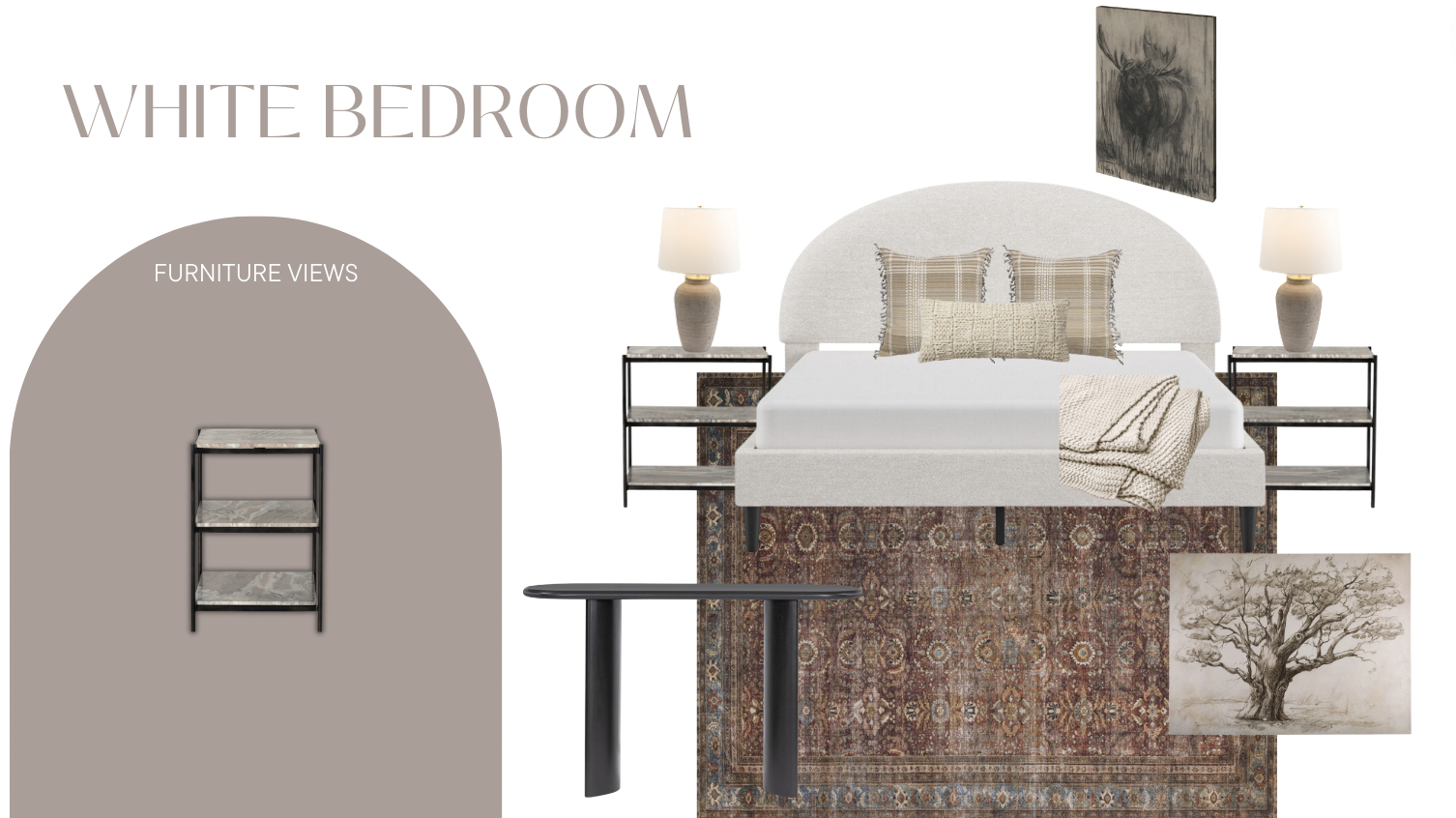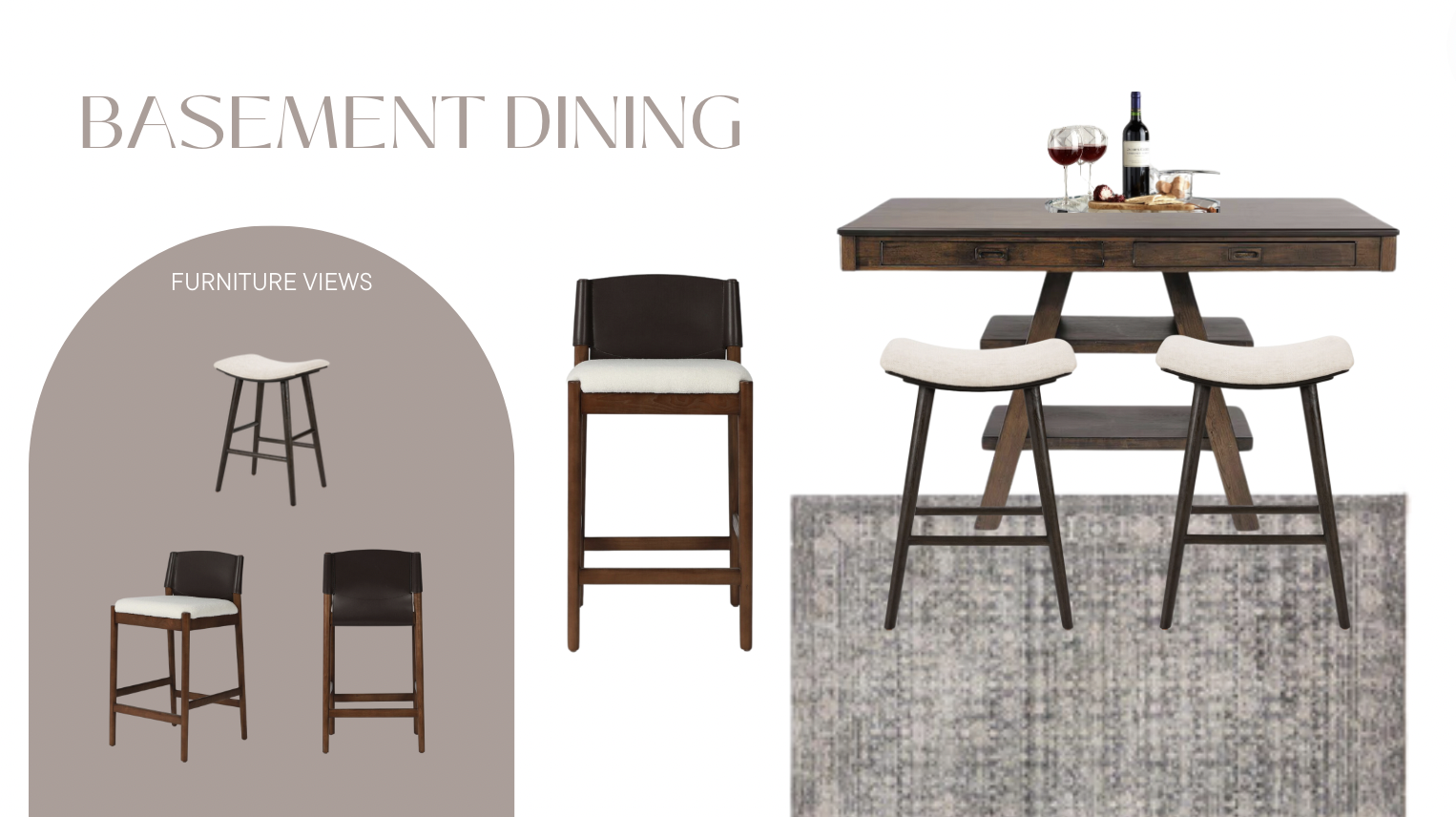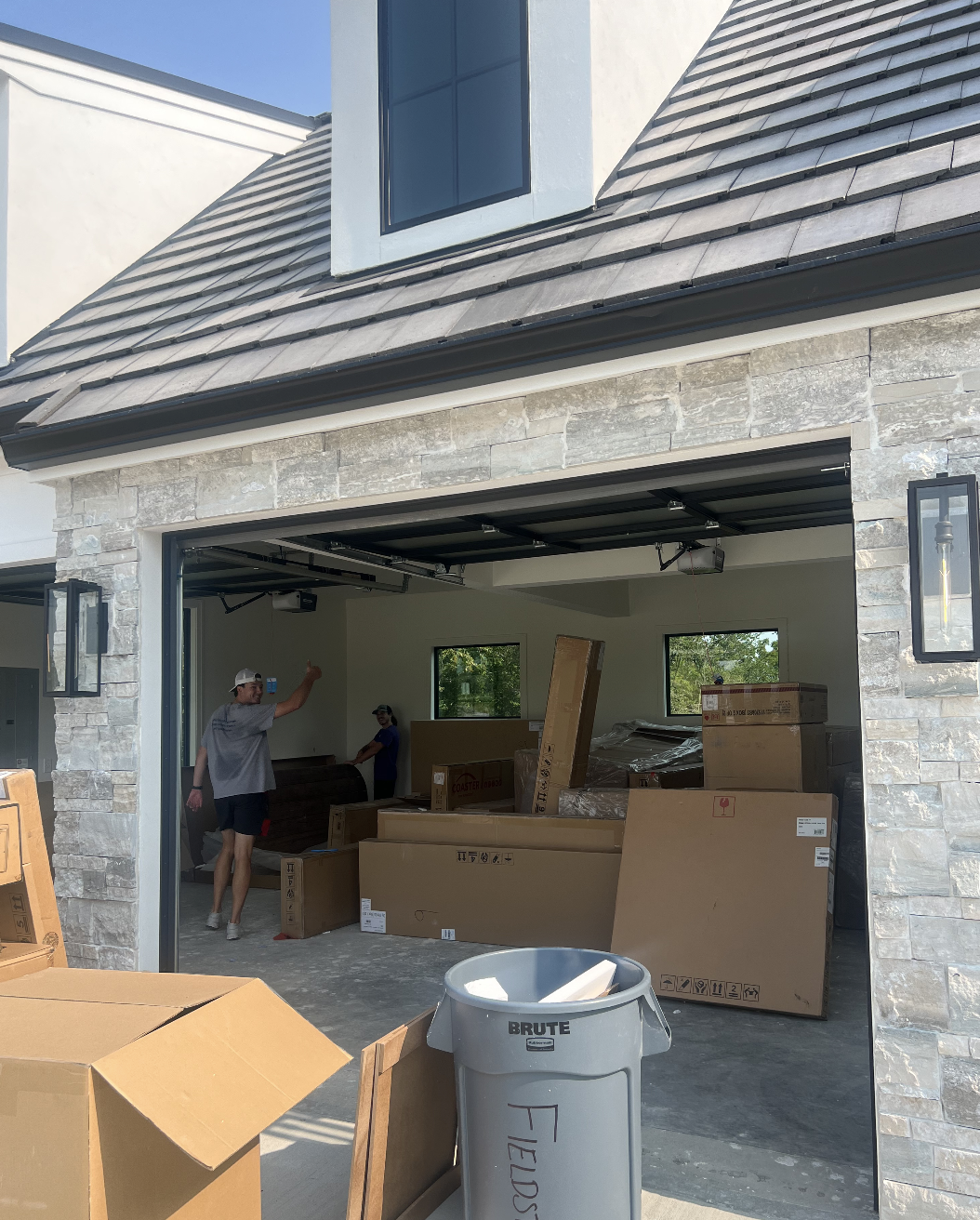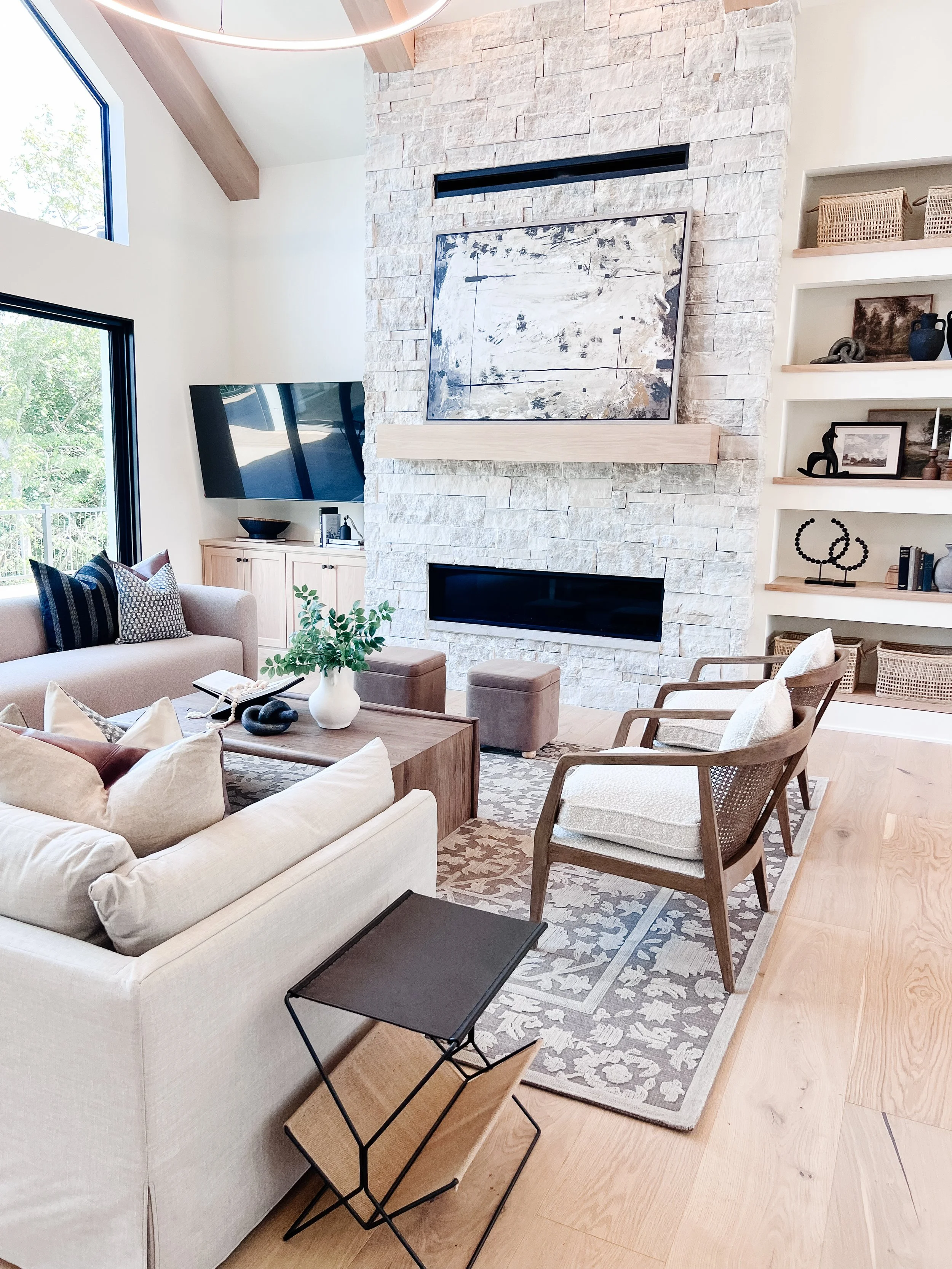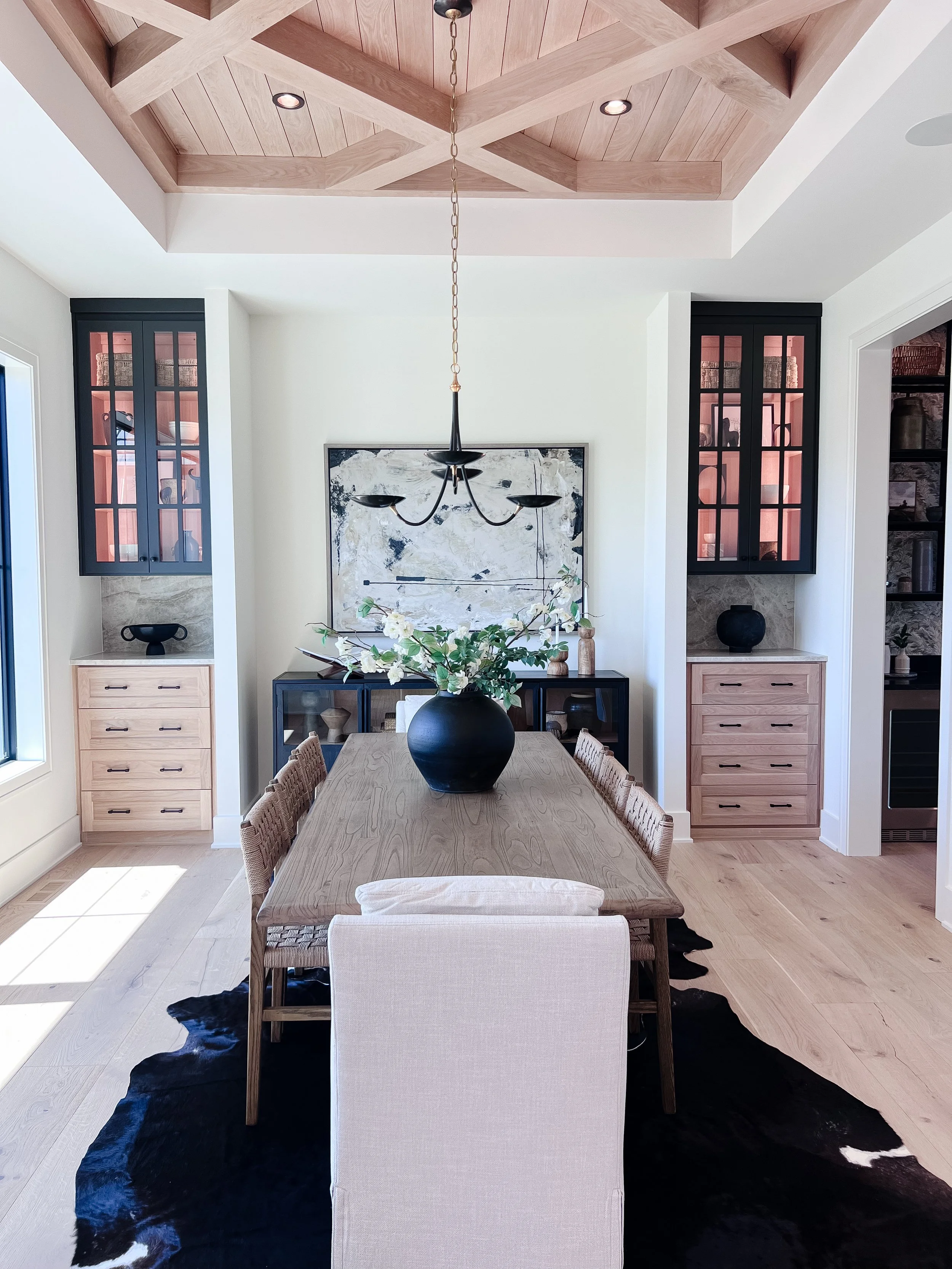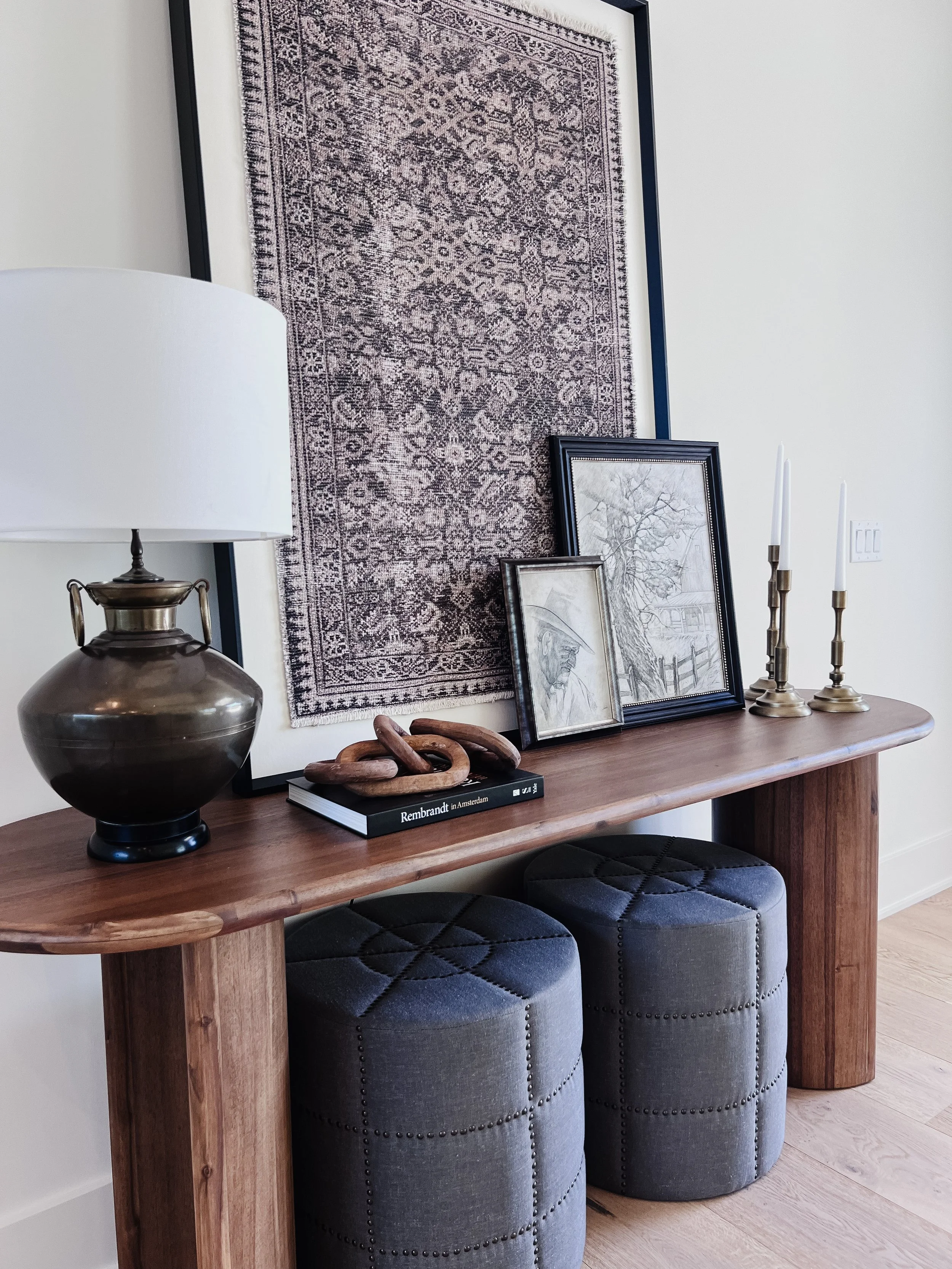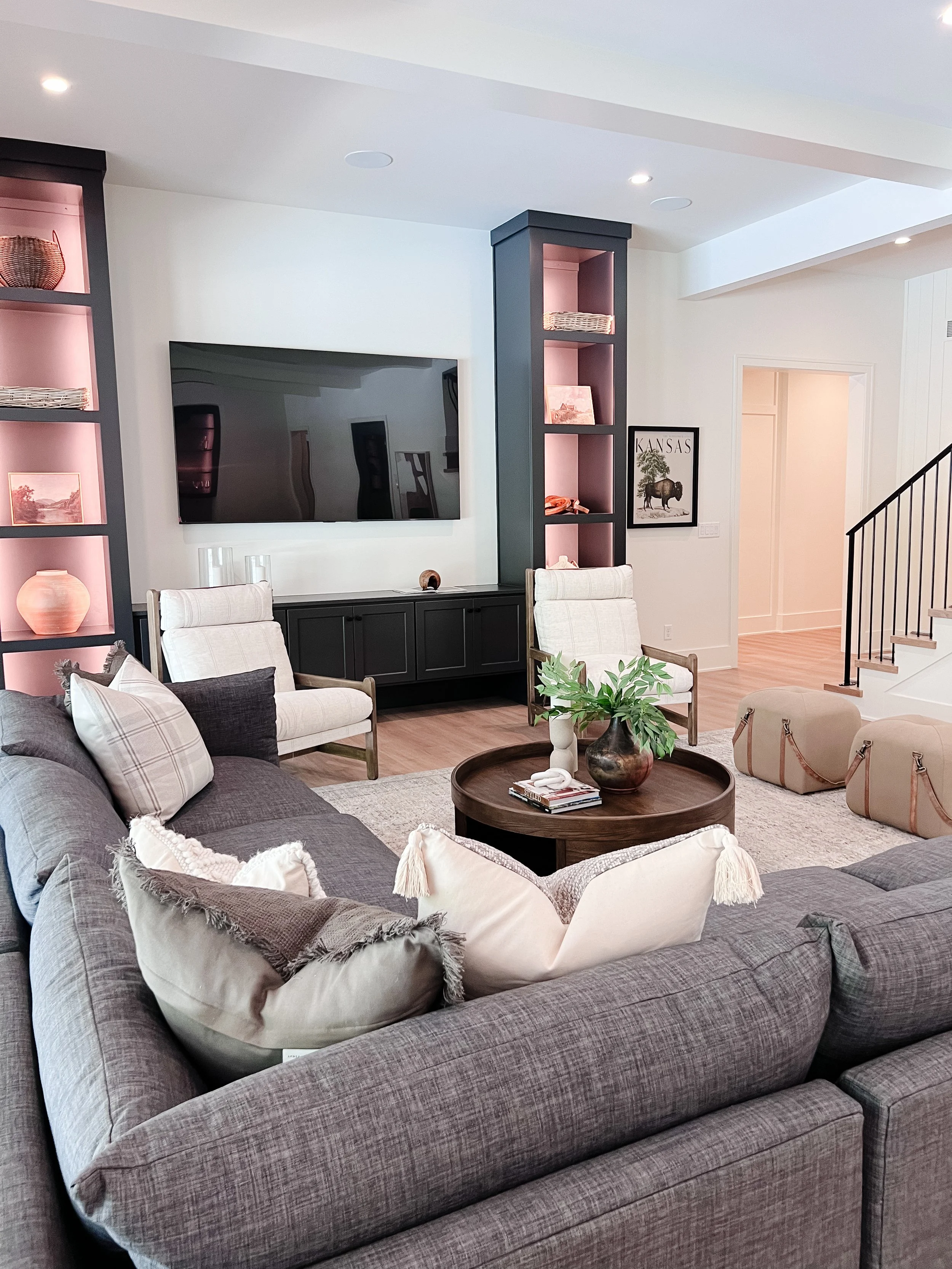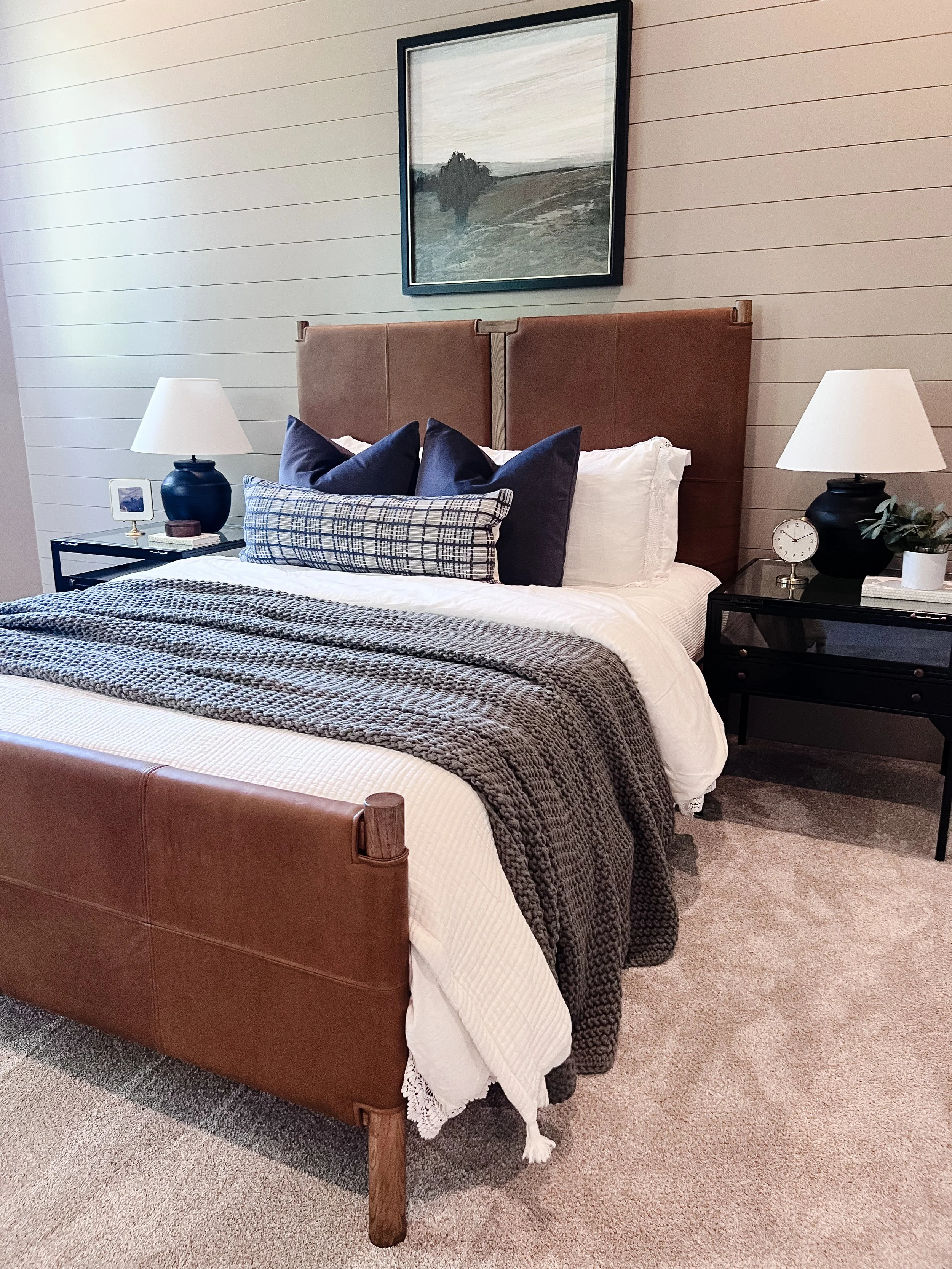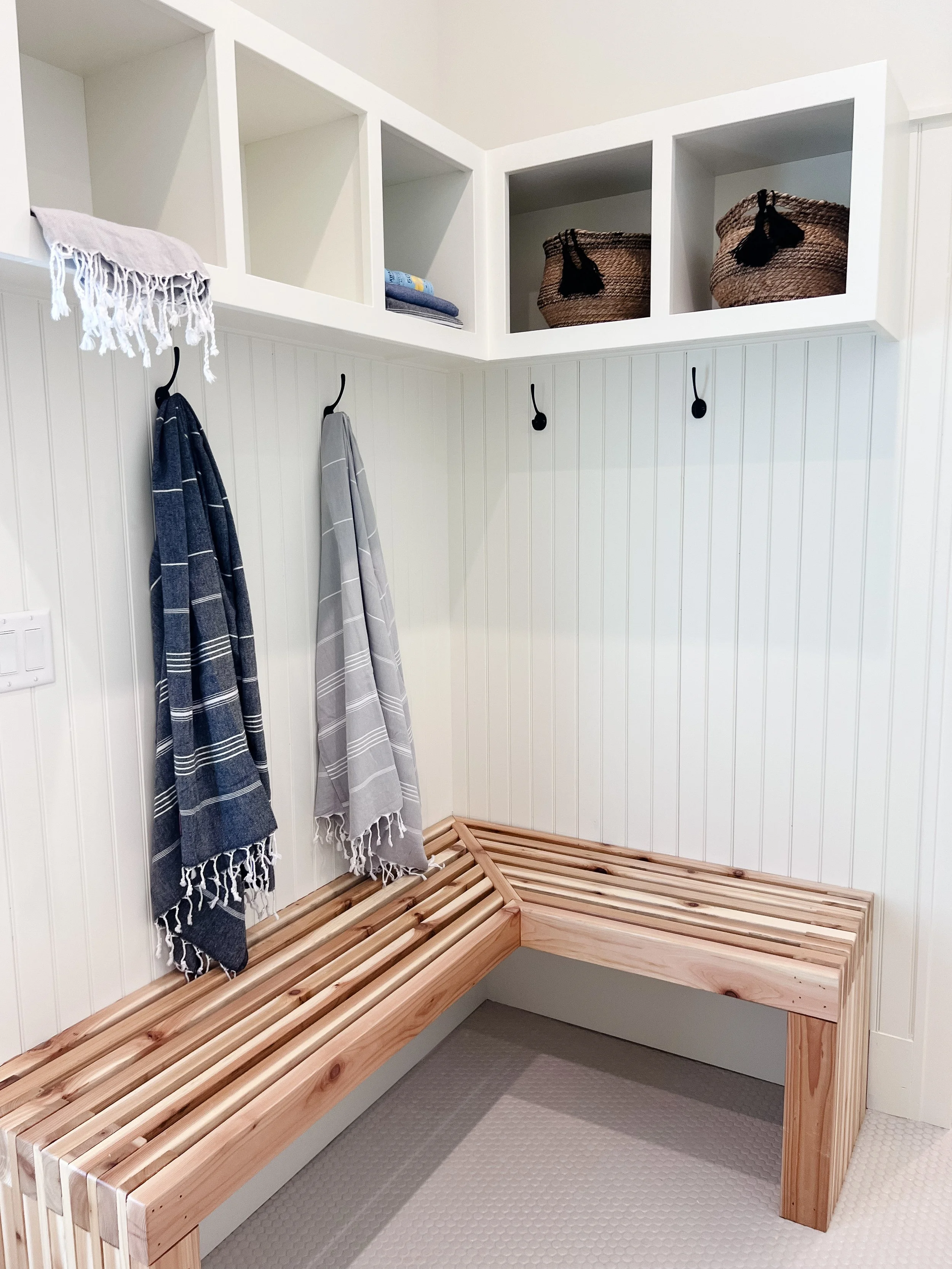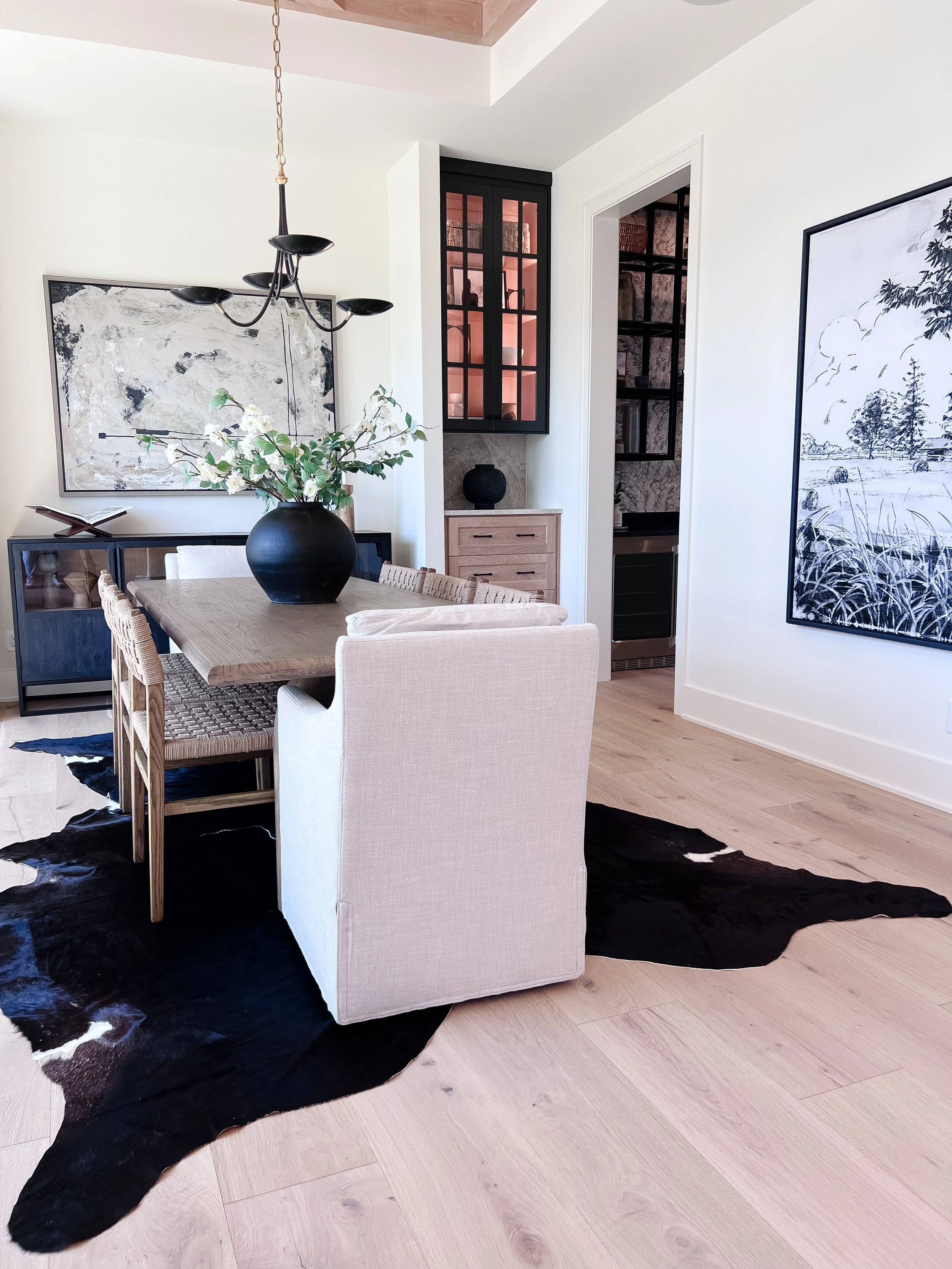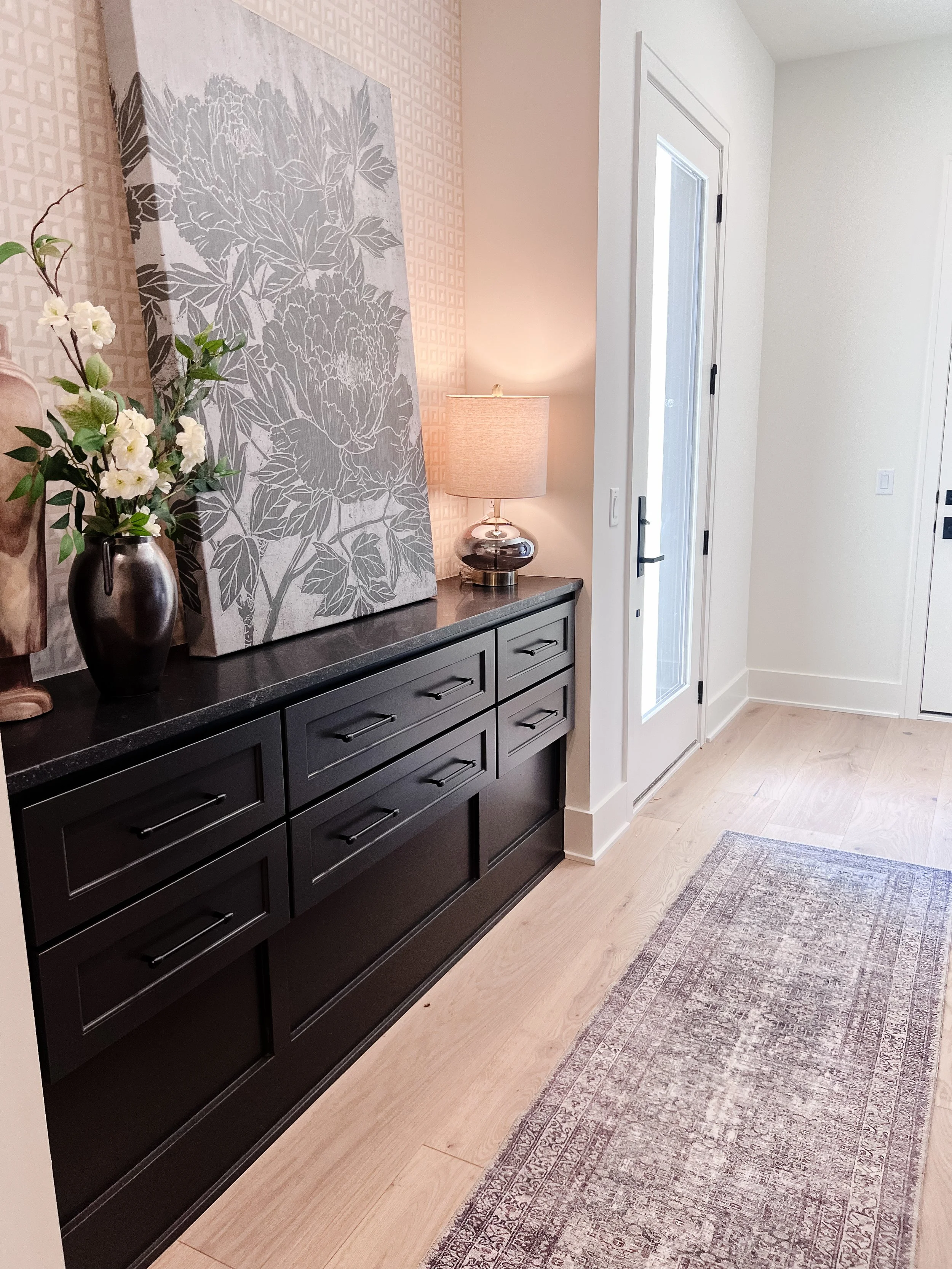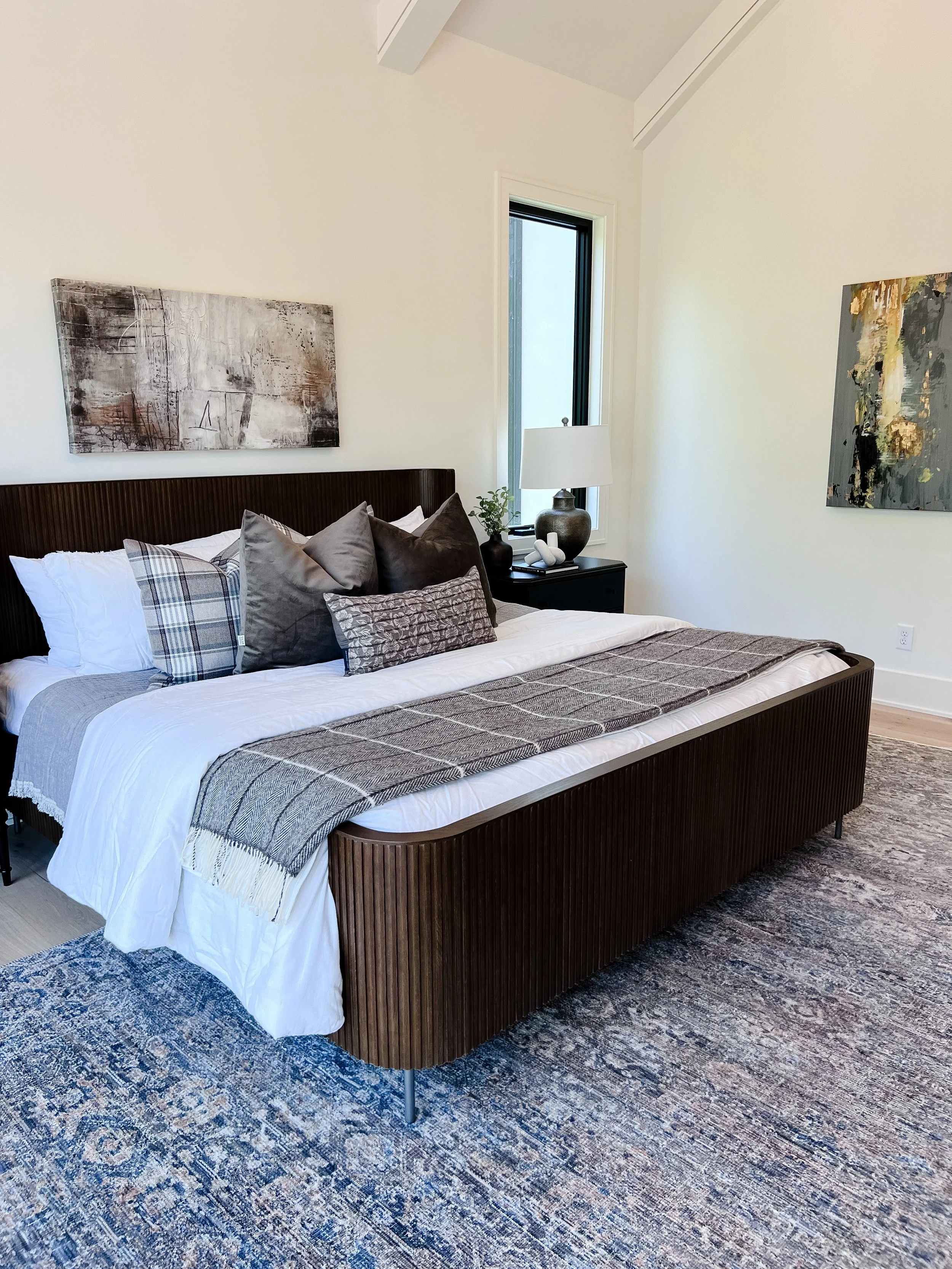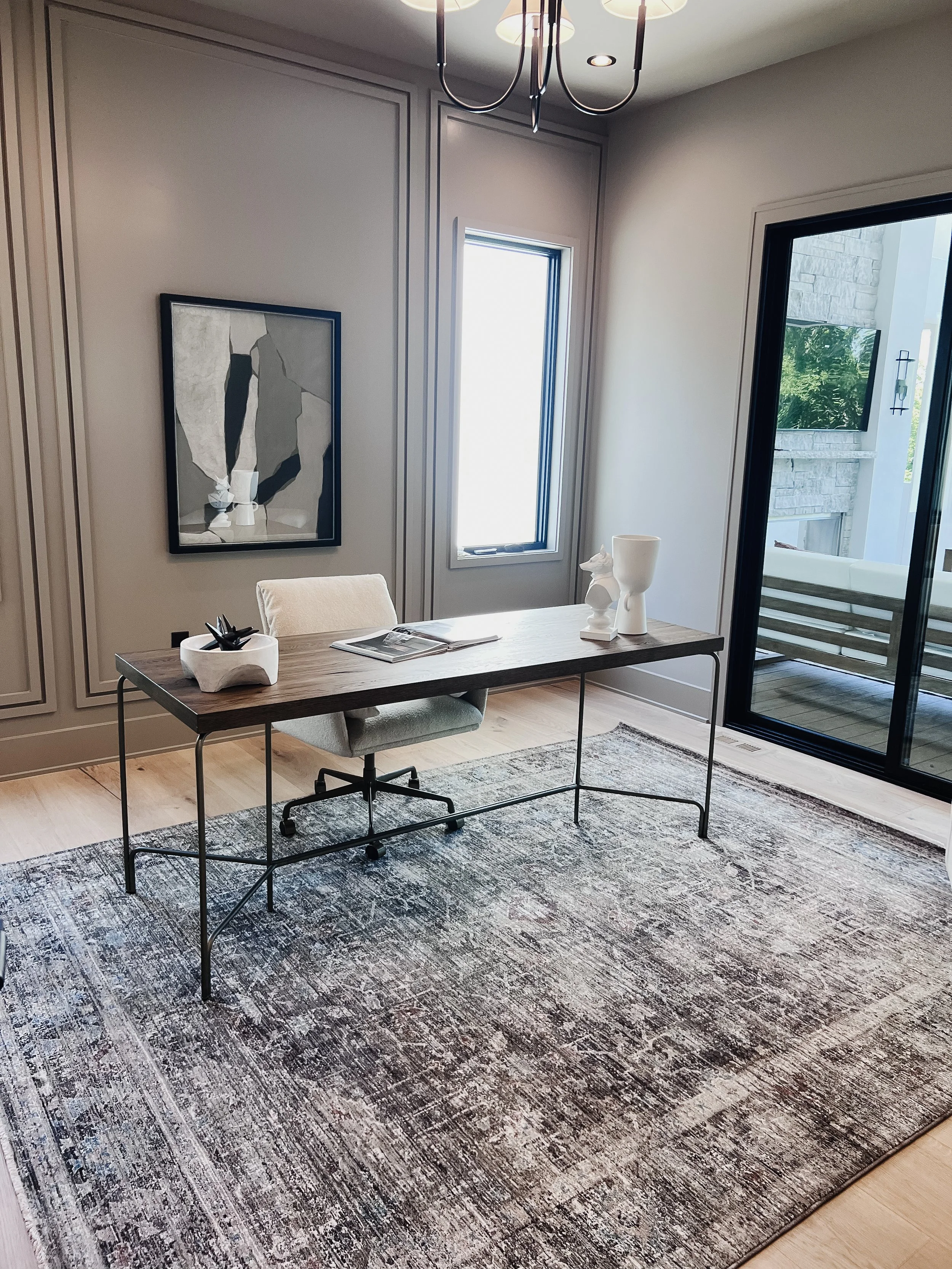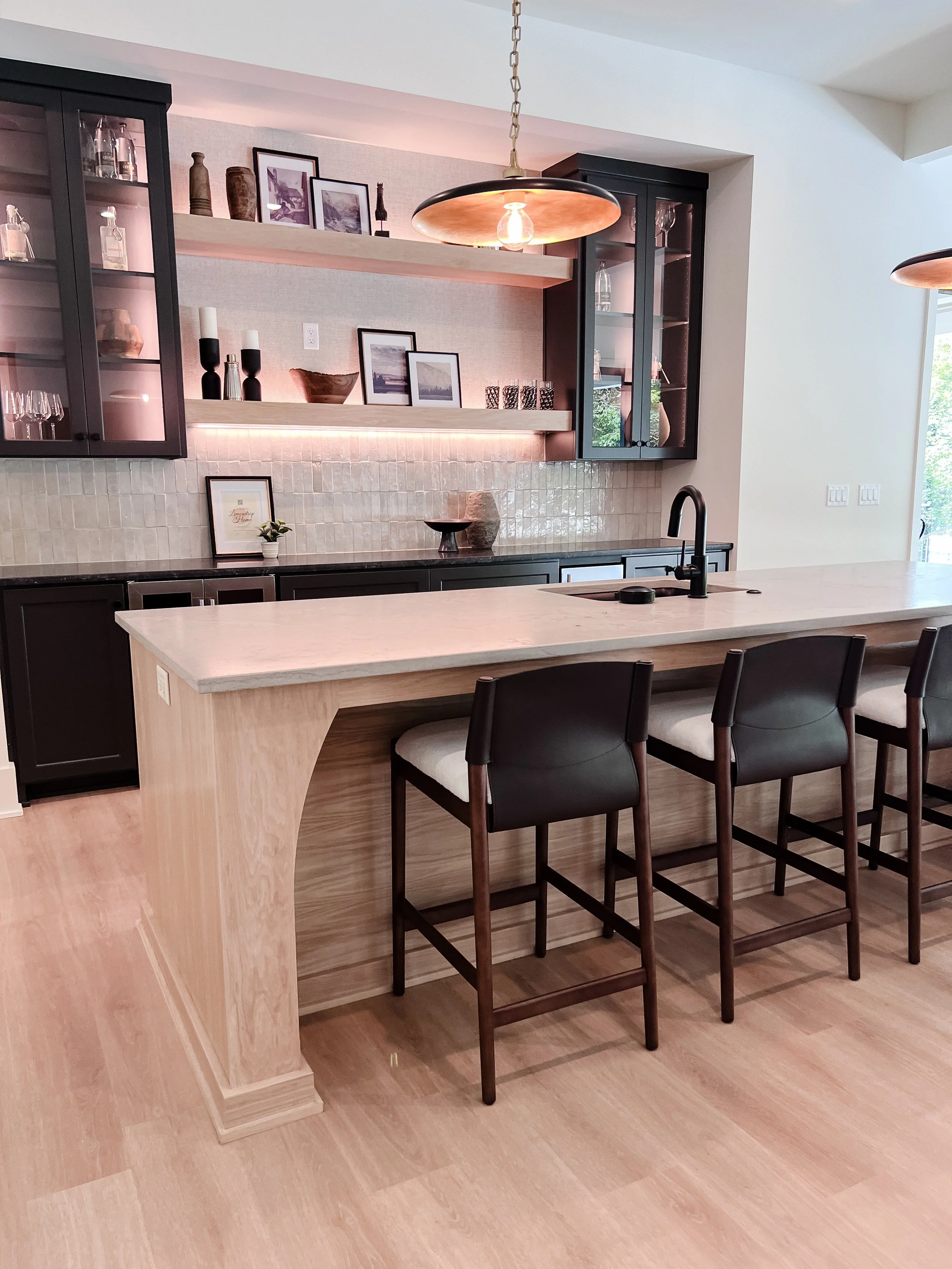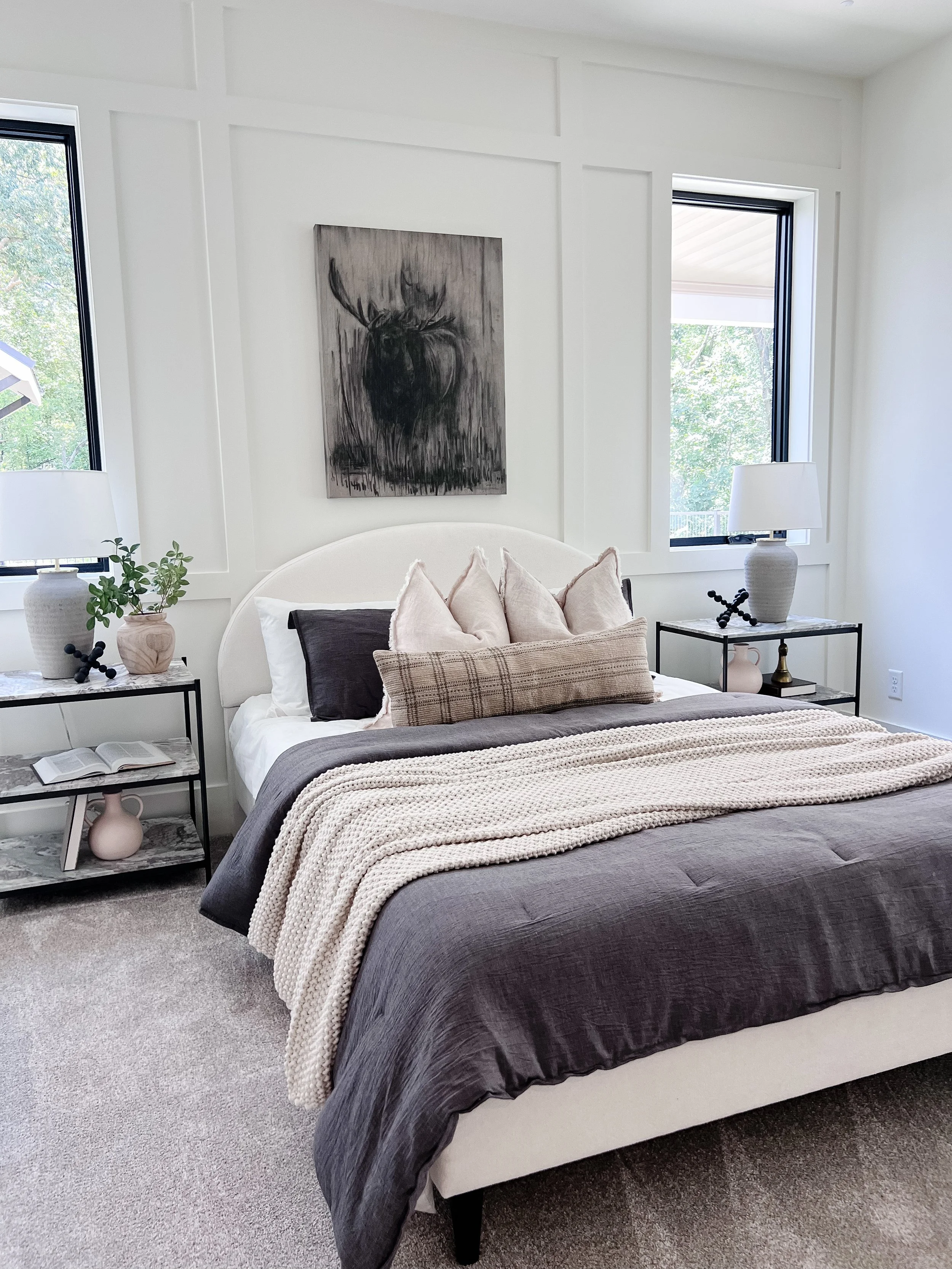The Story Behind Staging House Number 13 on the Artisan Tour by Fieldstone: A Texas Hill Country Inspired Home
As an interior designer and stager with Lemondrop Home in Kansas City, it’s always a thrill to be given the opportunity to bring a builder’s vision to life through staging a home. When Dan (the owner of Fieldstone) approached me with House Number 13, I knew this was going to be a special project. Inspired by the refined aesthetic of Texas Hull Country, this home needed to embody the rugged beauty of Texas while offering the comfort and elegance expected in a modern home. Over the next few months, my team and I set out to transform this house into a warm, welcoming space that resonates with the charm and character of Texas Hill Country.
Understanding the Texas Hill Country Aesthetic
Before diving into the staging and furnishing process, it’s essential to understand the core elements that define the Texas Hill Country aesthetic. Texas Hill Country, located in Central Texas, is renowned for its rolling hills, limestone bluffs, and clear rivers. The architecture in this region draws heavily from the natural surroundings, with focus on organic materials, neutral color palettes, and a seamless blend between indoor and outdoor living spaces.
Homes in the Texas Hill Country often feature natural stone exteriors, exposed wood beams, and large windows that bring in abundant natural light. Inside, the design typically emphasizes an open floor plan, high ceilings, and a connection to the outdoors. The aesthetic is a balanced mix of rustic charm and sophisticated simplicity, where comfort meets timeless style.
The Beginning Phases: Gathering Inspiration and Planning the Design
The initial phase of any design project is one of the most exciting and creatively stimulating. For House Number 13, this phase began with immersing ourselves in the aesthetic of Texas Hill Country….because to be honest we had no idea where to start!
To capture the aesthetic of Texas Hill Country, I turned to various sources of inspiration. I explored the works of architects and designers who specialize in Hill Country home and poured over countless different designs. Pinterest boards were filled with images of exposed beams, stone fireplaces, and expansive porches. The goal was to capture the balance of warmth, ruggedness, and sophistication the defines the Texas Hill Country.
I also paid close attention to how this style could be interpreted in a modern context. Fieldstone Builders wanted House Number 13 to feel current and livable while staying true to its roots. This meant blending the rustic charm of Texas Hill Country with modern conveniences.
Planning the Design Boards
With a solid understanding of the desired aesthetic, the next step was to create design boards. These boards are the blueprint for the entire furnishing and staging part of the project, guiding every decision from the color palette to the furniture selection.
I began by selecting a color scheme that reflected the natural beauty of Texas Hill Country. Earthy tones like warm beige, deep browns, and muted greens were the foundation. These colors were complemented by blues and creams, evoking the expansive skies and rolling hills. The goal was to create a cohesive palette that would flow seamlessly throughout the home, trying together different spaces with a consistent look and feel.
Next, we focused on materials and textures through art, textiles, furniture, and accessories. The Hill Country style is all about natural, organic materials, so I prioritized elements like reclaimed wood, stone, leather, and wrought iron. The interior designer Claire House Design did an amazing job on all of the material selections, light fixtures, and fixed elements throughout this house. Textures played a crucial role in adding depth and interest to the design. For example, a wooden coffee table might be paired with an elegant neutral rug, surrounded by soft linen textiles.
Once the foundation of design was established, I began selecting specific pieces of furniture, lighting, accessories. Each item was chosen for its ability to contribute. For instance, I selected sturdy, well-crafted furniture with clean lines that would offer both durability and elegance. Lighting fixtures with wrought iron details and warm ambient light were chosen to enhance the cozy welcoming atmosphere.
Ordering Furniture and Preparing for Installation
After finalizing the design boards, the next step was to order the furniture, lighting, and accessories. This process involved coordinating with various vendors, placing orders, and tracking shipments to ensure everything would arrive on time.
Selecting the right vendors was crucial. I sought out companies that specialized in high-quality, handcrafted furniture that would align with the Texas Hill Country aesthetic. This often meant working with artisans who could create custom pieces, such as beautiful art pieces. Working with local artists allowed me to ensure that each pieces would perfectly complement the overall design.
Timing was a significant factor in this phase. The goal was to have all pieces arrive within a specific timeframe to avoid delays in staging the home. This required careful planning and constant communication with vendors to monitor the progress of each order.
Receiving Shipments, Unpacking, and Assembling
As the furniture and accessories began to arrive, the project transitioned into the next exciting phase: installation. Receiving shipments is always a busy and intense period, as each piece needs to carefully unpacked, inspected, and assembles before being places in the home.
The first step upon receiving the shipments was to inspect each item for quality. Any damages or defects had to be addressed immediately to avoid any setbacks in the project timeline. Once everything was confirmed to be in perfect condition, we moved on to the unpacking and assembling process.
Unpacking is more than just unboxing—it’s about ensuring that each piece is handled with care to prevent any damage. For large or delicate items, we had out amazing movers working to remove packaging materials and transporting the pieces into the correct position of the home.
Assembly was the next crucial step. While some items arrived fully assembled others required careful construction. This was particularly true for larger pieces like beds, dining tables, and credenzas. Our team worked diligently to ensure that everything was put together securely and correctly.
As the rooms began to take shape the vision for the home came to life. Seeing design boards transition from concept to reality is always one of the most rewarding moments in any projects. With each piece of furniture carefully placed and every detail attended to, the house started to embody the warmth, character, and timeless elegance of Texas Hill Country.
My favorite helper… sweet miller. I think Easton was getting tired of all of our deliveries!
The Art of Trial and Error: Refining the Design
Selecting Pillows and Textiles
In the world of interior design, it’s often the small details that make the most significant impact, and selecting the right pillows and textiles is no exception. For House Number 13, pillows were more than just accents—they were essential elements in tying together the room’s color palette and adding layers of textures.
The process of selecting pillows involved a lot of trial and error. We mixed and matched pillows of various sizes and shapes, using a combination of solid colors, subtle patterns, and even a few bold prints to create visual interest without overwhelming the spaces. The. goal was to strike a balance between rustic charm and modern sophistication, and after several attempts, we found the perfect mix and brought warmth and coziness to each room.
Placing Furniture
Furniture placement is another area where trial and error played a significant role. While the design boards provide a general layout for each room, the actual placement of furniture required some on-the-spot adjustments. The challenge was to ensure that each piece not only fit the space but also contributed to the flow and functionality of the room.
Hanging Artwork and Placing Accessories
Artwork and accessories are the finishing touches that bring a design to life, but also require careful consideration. We selected artwork that reflected the natural beauty of Texas Hill Country—landscape paintings, abstract pieces in earthy tones, and even a few modern interpretations of western themes.
The challenge with hanging artwork was finding the right balance between scale and placement. Some pieces felt too small or too large for the walls we had initially planned for them. In one instance, a piece that was meant to hang above the bed in the guest room ended up feeling huge above the queen headboard. We swapped it out for a smaller piece with neutral colors to bring the room together.
Accessories, such as vases, sculptures, and books, also went through a process of trial and error. While we had a general idea of where each item would go, it wasn’t until we placed them in the space that we could see how they interacted with the rest of the design. For example, a rustic ceramic vase that looked perfect on the design board didn’t quite work when placed on the entry table. It felt too heavy for the space and disrupted the room’s visual flow.
Iteration Leading to Perfection
The trial-and-error process is an essential part of interior design, especially when working on a project as nuanced as the artisan homes. Each adjustment, whether it was moving a piece of furniture, swapping out a pillow, or selecting a different piece of artwork, brought the design closer to the ideal vision.
Through this iterative process, we were able to fine-tune each element of the home to create a cohesive harmonious space. The final result was a home that not only reflected the rugged beauty and refined elegance of Texas Hill Country but also felt warm, welcoming, and uniquely suited to modern living.
The Final Results
Living Room
In this image, we see a beautifully staged living room that perfectly embodies the Texas Hill Country aesthetic with a modern twist. The focal point of the room is a stunning, floor-to-ceiling stone fireplace, with a large abstract piece of art above the mantle that adds a touch of contemporary elegance to the rustic stone. The fireplace is framed by built-in shelves that display carefully curated accessories, including woven baskets, vases, and art, which enhance the room’s warm organic feel.
The furniture arrangement is both inviting and functional. A light, neutral-colored sofa anchors the space, complemented by a pair of sleek wooden armchairs with woven cane backs, adding texture and an air or relaxed sophistication. The coffee table, made from rich wood, brings warmth and depth to the room, while a plush area rug with a subtle floral pattern ties everything together.
Soft, earthy tones dominate the color palette, with the natural light pouring in through large windows, highlighting the room’s serene and welcoming atmosphere. The addition of greenery in the form of a simple, elegant plant in a white vase on the coffee table brings life and a fresh, natural element to the space. A small, black side table with a unique design adds a modern contrast to the rustic elements, providing both style and practicality.
Dining Room
This image showcases a sophisticated and stylish dining room that blends modern elegance with rustic charm, staying true to Texas Hill Country aesthetic. The focal point of the room is a beautiful, natural wood dining table, surrounded by a mix of woven chairs and upholstered end chairs, creating a balance of texture and comfort.
Above the table hangs a sleek, black chandelier with minimalist design, which contrasts beautifully with the room’s natural tones. The chandelier is suspended from a stunning coffered ceiling made of light wood, adding architectural interest and a touch of rustic warmth to the space.
On either side of the table, built-in cabinetry provides both storage and display space. The light wood cabinetry is complemented by black-framed glass doors, offering a glimpse of carefully curated accessories inside, while the lower drawers feature dark hardware that ties in with the chandelier and other black accents in the room. The use of light and dark elements creates a dynamic contrast, enhancing the room’s modern yet grounded feel.
A large abstract painting, similar to the one in the living room, is centered on the back wall, anchoring the space and drawing the eye. Beneath the painting, a dark sideboard offers additional storage and serves as a base for a simple yet striking arrangement of greenery in a lark black vase. This touch of nature adds freshness and life to the room, connecting the interior space with the natural beauty of Texas landscape.
The black cowhide rug beneath the table is a nod to the rugged Texan spirit, adding an unexpected element of texture and grounding the space with its organic shape. The light wood flooring ties everything together, providing warmth and continuity with the rest of the home.
Interested in more information on this beautiful artisan home? Contact us today for more information.











